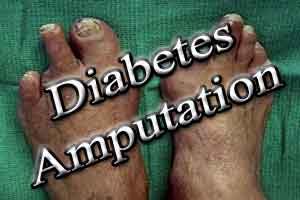- Home
- Editorial
- News
- Practice Guidelines
- Anesthesiology Guidelines
- Cancer Guidelines
- Cardiac Sciences Guidelines
- Critical Care Guidelines
- Dentistry Guidelines
- Dermatology Guidelines
- Diabetes and Endo Guidelines
- Diagnostics Guidelines
- ENT Guidelines
- Featured Practice Guidelines
- Gastroenterology Guidelines
- Geriatrics Guidelines
- Medicine Guidelines
- Nephrology Guidelines
- Neurosciences Guidelines
- Obs and Gynae Guidelines
- Ophthalmology Guidelines
- Orthopaedics Guidelines
- Paediatrics Guidelines
- Psychiatry Guidelines
- Pulmonology Guidelines
- Radiology Guidelines
- Surgery Guidelines
- Urology Guidelines
Diuretics increase amputation risk in diabetes patients: EASD 2018

People with type 2 diabetes (T2D) using diuretics are at an increased risk of serious problems in their lower limbs that can lead to amputation, according to a presentation made at the 54th Annual Meeting of the European Association for the Study of Diabetes (EASD).
Louis Potier, Department of Diabetology, Endocrinology, and Nutrition, Bichat Hospital, Assistance Publique—Hôpitaux de Paris, Paris, France, and colleagues conducted the study to analyze the association between diuretic use and the risk of what is known as lower limb events (LLE) in patients with T2D.
“This study was based on the hypothesis that amputation warnings found in the CANVAS trial could be driven by the diuretic effect of SGLT-2 inhibitors,” Dr. Potier told Elsevier’s PracticeUpdate. “ This is, to our knowledge, the first study so far to propose a mechanistic explanation for this unexpected outcome.”
For the prospective, observational cohort study known as SURDIAGENE, 1074 patients with type 2 diabetes were enrolled between 2002 and 2012 and followed-up until the onset of lower-limb events, death, or December 31, 2015. The primary outcome measure was the first occurrence of a lower-limb event, defined as a composite of lower-limb amputation and lower-limb revascularization.
Patients were divided into those who were using diuretics at baseline and those who were not, with 537 patients in each group. The two groups of patients were matched. The mean age in each group was 65.9 years and 66.3 years, respectively. The proportion of males in each group was 57.2% and 57.4%, respectively.
Also Read: New therapy to save diabetics from amputation
Key Findings:
- During a median follow-up of a period of 7.2 years, the incident rate of lower-limb events was 0.81 per 100 patient years among those using diuretics and 0.54 per 100 patient years among non-users.
- The hazard ratio for lower-limb events in users vs non-users of diuretics was 1.75 (95% confidence interval 1.19 - 2.58; P = .005). Looking at lower-limb amputation and revasculariation separately revealed that diuretic use was associated with a greater risk of amputations (hazard ratio 2.34; 95% confidence interval 1.35 - 4.05; P = .003), but not revascularization (hazard ratio 1.28; 95% confidence interval 0.82 - 2.01; P = .28).
“In the light of our primary hypothesis of diuretic-induced effect for amputations observed in CANVAS, we assume that volume depletion could lead to hypoperfusion of the distal extremities and then trigger amputations,” said Dr. Potier. “However, this assumption remains speculative; we do not have enough data in our study to support this hypovolemia hypothesis. … Further studies with careful assessment of volemic status are needed to address this question.”
He also noted important limitations to the study. Only baseline exposure to diuretics was evaluated without considering the duration of therapy or introductions and interruptions of these drugs during the study period.
“Clinical implications might be to use diuresis-inducing drugs with caution and with careful assessment of the volemia in patients at highest risk of amputations (ie, those with peripheral arterial disease or foot ulcers)," suggested Dr. Potier.

Disclaimer: This site is primarily intended for healthcare professionals. Any content/information on this website does not replace the advice of medical and/or health professionals and should not be construed as medical/diagnostic advice/endorsement or prescription. Use of this site is subject to our terms of use, privacy policy, advertisement policy. © 2020 Minerva Medical Treatment Pvt Ltd